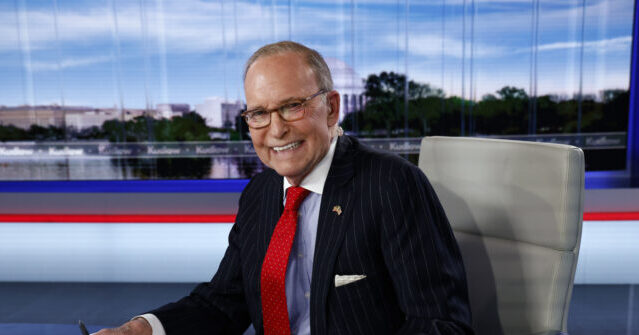Larry Kudlow says the recession talk sweeping through Wall Street and the press is based on a fundamental misunderstanding of the latest GDP numbers — and a refusal to acknowledge the early effects of President Trump’s economic agenda.
On his Fox Business Network show Wednesday, Kudlow took direct aim at what he described as a “media and Wall Street obsession” with the headline 0.3 percent decline in real GDP during the first quarter of 2025.
“The liberal press and their pals on Wall Street are talking about recession — because the first quarter GDP was scored with a slight decline of three-tenths of 1 percent,” Kudlow said. “Yet if you look under the hood of the GDP report, and carefully parse through the numbers, what you actually come up with is a rather strong economy, that’s growing at something like 3 percent.”
Kudlow pointed to what he called “core GDP” — a measure that strips out volatile components like inventories, government spending, and net exports. That narrower but more stable measure, known formally as real final sales to private domestic purchasers, rose at an annual rate of around 3 percent in the first quarter.
“Mr. Trump has barely begun, but take a look already at core GDP — which takes out the fluky trade import numbers from tariff front running and looks at just the heart of GDP, which is private sector consumption plus private sector business investment,” Kudlow said. “Well, looking at core GDP, you see an actual increase in the first-quarter economy — of 3 percent, no less.”
That strength, he argued, is being masked by a temporary surge in imports, as businesses stock up in anticipation of higher tariffs. Kudlow said this kind of activity is not a sign of weakness, but of confidence in future demand.
The highlight of the report, in Kudlow’s view, was a massive uptick in business investment.
“Business fixed investment increased nearly 10 percent at an annual rate in the first quarter,” he said. “And, even better, business equipment and machinery — which is an incredibly important harbinger of productivity, job increases, and real wage hikes — rose an incredible 22.5 percent. There’s no recession there.”
Kudlow attributed this to expectations that President Trump’s tax reform package will pass this summer. The administration has proposed 100 percent expensing for business investment, including factory equipment and buildings, retroactive to January 20, as well as a lower corporate tax rate on domestic production.
“So, what’s actually happening is that businesses are front-running the big beautiful tax cut that will be coming their way,” Kudlow said. “It’s a phenomenal story. It’s a story of reshoring.”
“The business tax cuts — along with the new personal tax cuts for service worker tips, overtime, and seniors’ Social Security benefits — will far outweigh any drag from tariffs.”
He also pointed to signs of sharply slowing inflation. The personal consumption expenditures (PCE) price index — the Federal Reserve’s preferred gauge — was flat in March, and the core PCE index also came in at zero. Meanwhile, the consumer price index fell by 0.1 percent.
“All of this inflation progress sets up a Federal Reserve cut,” Kudlow said. “That’s right, a rate cut should be coming.”
Finally, Kudlow called attention to what he described as a statistical oddity in the GDP calculation. While imports increased by $333 billion in the first quarter, private inventories rose only $140 billion — leaving, he said, nearly $200 billion “unaccounted for.”
“There’s a gap. Where’d those trade imports go?” he asked. “Did the roughly $200 billion gap between imports and inventories just evaporate? The pencil pushers over at the commerce department clearly can’t count.”
Kudlow said that if you simply add the missing imports back into GDP, you eliminate the contraction.
“And, when I do that, the real GDP growth in the first quarter of 2025 comes out to be 3.2 percent,” he said. “Even better than private domestic sales.”
For Kudlow, the conclusion is clear: the U.S. economy is not stalling — it’s revving up.
“That sets up an economy boosted by tax cuts and deregulation that can roar — perhaps in the second quarter, but certainly by the second half of the year and well into 2026,” he said.
Read the full article here


